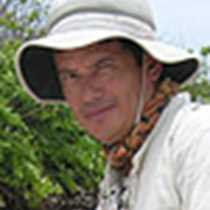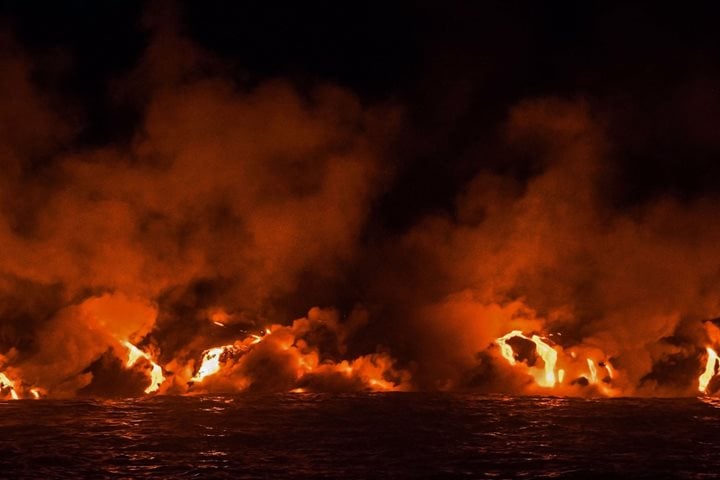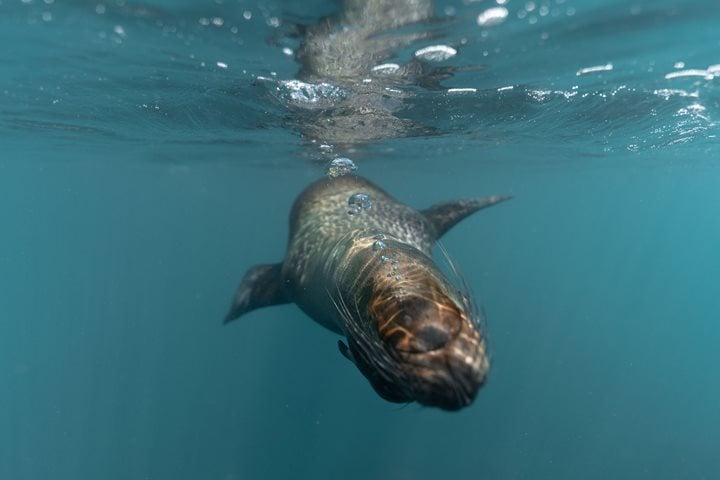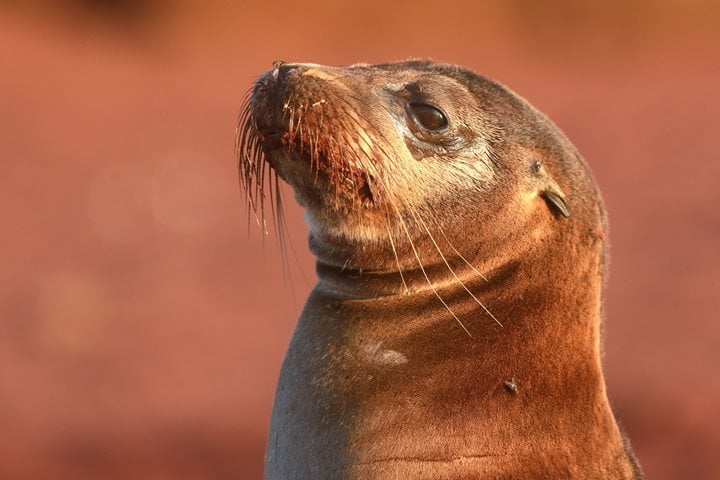Early in the morning, after a long navigation from Santiago Island, we crossed the equator and finally arrived at Genovesa Island. Located in the Northern hemisphere, far from the central islands, Genovesa is home of thousands of sea and land birds, but due to its isolation land reptiles have never arrived here.
The morning came fast and soon we were landing for our first excursion at the beach of Darwin Bay. Its white color contrasted with the birds, the trees, and even the insects which captivated the attention of our guests. We walked along the narrow trail that leads to nesting areas of different species of birds. We observed swallow tailed gulls incubating their eggs, red footed boobies collecting nesting material, and baby Nazca boobies we saw two weeks ago which have grown and some are about to fledge. In the air, inquisitive frigate birds harassed some tropic birds trying to steal their food. We arrived at the end of the beach where lava and yellow crowned night herons tried to catch some fish along the shallows where playful Galapagos sea lions enjoyed the calm waters, floating indifferently with their eyes completely closed due to the intense sun.
After our visit to Darwin beach we had time to snorkel along the shore, observing colorful tropical fish such as Moorish idols, parrot fish, hogfish and some Galapagos sharks swimming along the depths of this place which a long time ago was a very active volcano.
In the afternoon we headed our Zodiacs to visit Prince Philip’s Steps or “El Barranco”. The top of the cliffs were green and full of red footed boobies and frigate birds. If one has seen an apple tree full of ripe fruit, one could easily understand and picture how some portions of the trail looked with all of the inflated gular sacks of the male frigate birds waiting to be picked up by a female. Everyone who walked the trail at Prince Philip’s Steps was astonished by the display of nature in this place. Yet, when the time came, we were eager to experience our next site. The next place wasn’t covered with exuberant vegetation, but lava. It was a place where the top predator of the island, the short eared owl, hunts during the day due to lack of hawks, its most dangerous competitor. At a distance we observed two owls, one of them observing attentively small birds along the seashore, and the second one inside a cave well protected by some dry bushes. It was interesting to observe how their brown bodies were perfectly camouflaged with the rocks, becoming almost invisible to our naked eye.
Our adventure in the Galapagos might have come to an end, but the memories will last forever. To know that there is still a place where life goes on as it always has and evolution is still developing even as we walk through the forests, is a wondrous encounter to absorb in a week.







